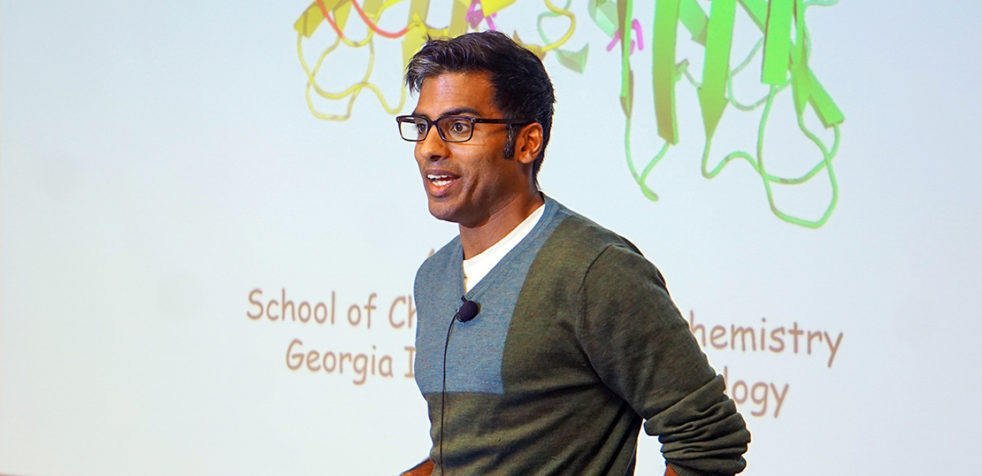ME Aaron Blanchard gave a talk on his ground breaking DNA mechanotechnology research at the Bud Suddath Award Symposium. The award is open to any doctoral student conducting biological or biochemical research at the molecular or cellular level, and as its first place winner, Blanchard will get his name added to a plaque in the Petit Institute as well as $1000 to further his research.
Blanchard’s work is focused on the nano-scale mechanical forces that occur within the human body—everything from muscle contraction to embryogenesis are accomplished by these tiny biological machines. These functions are controlled by biomolecular structures that detect and transmit piconewton-scale forces. Blanchard began by emphasizing our dependence on these tiny mechanical forces, and discussed his research studying and reproducing them.
He and his team have already made significant contributions to the field of “mechanotechnology,” a term he coined. Specifically, he has worked on developing nano-scale DNA hairpin tension probes that communicate when force is being exerted. These rigid six-helixed structures, among other important functions, emit force as fluorescence that can be observed during experimentation. Integrins, receptors that allow animal cells to bind to the extracellular matrix, are a main focus for Blanchard’s team. Blanchard clarified that “when integrins get activated, it starts intracellular signaling, which decides how cells react to force.”
The orientation of these forces matter, and exploration of this orientation is one of the most crucial parts of Blanchard’s research. From a National Center for Biotechnology Information article detailing one of Blanchard’s collaborations: “We used single-molecule force spectroscopy to determine the probes’ tension response thresholds and used computational modeling to show that hairpin unfolding is semi-cooperative and orientation-dependent.” This is important for the field of biotechnology because it allows scientists to build similar mechanosensors for important biophysical processes like immune response and cell development.
As a result of their work, Blanchard and his team have created the world’s strongest synthetic DNA-based motor. He explained that DNA is one of the
more convenient molecules to begin with—it’s easily manipulated, affordable, commercially available and easy to design with computational sequencing. The mechanical forces of DNA are predictable which makes it an easy structure to build from the ground up.
His talk was part of a two-day symposium, the focus of which was sharing new research on probe signaling that might help human health. The award, which has been given annually for the last 28 years, is granted in memory of Bud Suddath, a former professor and Vice President for Information Technology at Georgia Tech.
